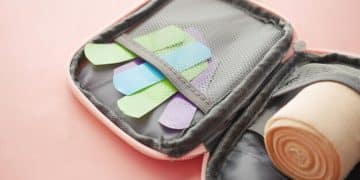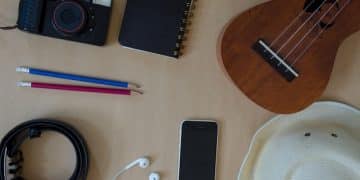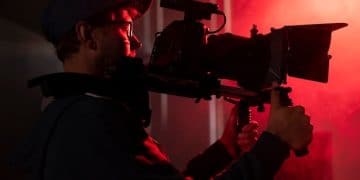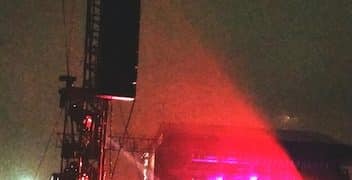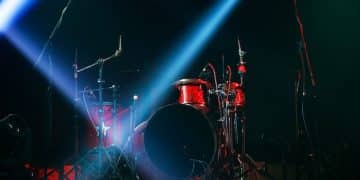Concert Ear Protection: Preserve Your Hearing at Live Music Events
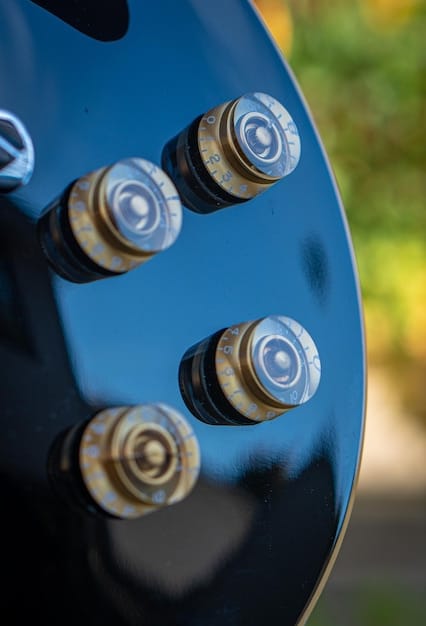
Concert ear protection is crucial for preserving hearing health at live music events, with options ranging from disposable foam earplugs to custom-molded musicians’ earplugs, each offering varying levels of noise reduction and sound fidelity.
Attending concerts and music festivals is a thrilling experience, but the loud music can pose a significant risk to your hearing. Protecting your ears with proper concert ear protection is essential for enjoying live music without causing long-term damage.
Why Concert Ear Protection Matters
Concert sound levels often exceed 100 decibels (dB), well above the safe threshold recommended by hearing health organizations. Prolonged exposure to such high levels can lead to noise-induced hearing loss (NIHL) and tinnitus, a persistent ringing in the ears. This risk is why concert ear protection is so vital.
Understanding the decibel levels and the potential damage they can cause is the first step in prioritizing your hearing health. Many concert-goers are unaware of the risks, assuming that temporary muffled hearing after a show is normal. However, repeated exposure without protection can result in irreversible damage.
Understanding Decibel Levels
Decibel levels are logarithmic, meaning that a small increase in dB corresponds to a significant increase in sound intensity. Here’s a rough guide:
- 30 dB: Quiet library
- 60 dB: Normal conversation
- 85 dB: The level at which prolonged exposure can cause hearing damage
- 100-120 dB: Typical concert levels
- 140 dB: Jet engine takeoff (causes immediate damage)
Given that concerts often reach 100 dB or higher, even a few hours of unprotected exposure can be harmful. The louder the environment, the shorter the safe exposure time. This is where concert ear protection becomes indispensable.
Investing in concert ear protection can significantly reduce the risk of NIHL and tinnitus, allowing you to enjoy live music for years to come without compromising your hearing. There are various types available, each offering different levels of protection and sound fidelity.
Ultimately, being proactive about your hearing health at concerts is a simple yet effective way to ensure that you can continue enjoying your favorite music without long-term consequences. Awareness and preparation are key.
Types of Concert Ear Protection
Choosing the right concert ear protection involves understanding the different types available and their specific benefits. From disposable foam earplugs to high-fidelity musicians’ earplugs, each option offers a unique balance of protection, comfort, and sound quality.
The best choice for you will depend on factors like your budget, how often you attend concerts, and the level of sound fidelity you desire. This section will explore three common types, providing insights to help you make an informed decision.
Foam Earplugs
Foam earplugs are the most affordable and widely available option. They are typically made of soft, pliable foam that can be easily compressed and inserted into the ear canal. Once in place, the foam expands to create a tight seal, blocking out sound.
While effective at reducing noise levels, foam earplugs often muffle sound, making it difficult to appreciate the nuances of the music. Despite this, they are an excellent choice for those on a tight budget or for occasional concert-goers.
Musicians’ Earplugs
Musicians’ earplugs, also known as high-fidelity earplugs, are designed to reduce sound levels evenly across the frequency spectrum. This means that they lower the overall volume without significantly altering the sound quality.
These earplugs typically feature a filter that attenuates sound, allowing you to hear the music clearly while protecting your ears from damaging levels. They are a popular choice among musicians and serious concert attendees who want to preserve the fidelity of the music.
Custom-Molded Earplugs
Custom-molded earplugs offer the best fit, comfort, and protection. These earplugs are made from impressions of your ear canals, ensuring a perfect seal. They can be made with or without filters, depending on your specific needs.
- Comfort: Designed to fit perfectly in your ear.
- Protection: Offering the best level of protection.
- Cost: The most expensive option, but worth the investment for serious music lovers.
Custom-molded earplugs are a significant investment, but their superior comfort, protection, and sound quality make them a worthwhile option for those who frequently attend concerts or work in loud environments.

Choosing the right type of concert ear protection is a personal decision that depends on your individual needs and preferences. Each type offers a unique balance of protection, comfort, and sound quality, so it’s important to weigh the pros and cons of each before making a choice.
Ultimately, the most important thing is to protect your hearing at concerts. Whether you opt for affordable foam earplugs, high-fidelity musicians’ earplugs, or custom-molded earplugs, taking steps to protect your ears will allow you to enjoy live music for years to come.
How to Choose the Right Ear Protection
Selecting the ideal concert ear protection requires careful consideration of several factors, including noise reduction rating (NRR), comfort, sound quality, and cost. Understanding these elements will help you find the best solution for your specific needs.
Different types of ear protection offer varying levels of noise reduction and sound fidelity, so it’s essential to balance these factors to ensure that you’re both protected and able to enjoy the music.
Noise Reduction Rating (NRR)
The Noise Reduction Rating (NRR) is a measure of how much a hearing protection device reduces noise levels. A higher NRR indicates greater noise reduction. However, it’s important to note that the actual noise reduction you experience may be less than the NRR due to factors like fit and proper usage.
Foam earplugs typically have an NRR of 29-33 dB, while musicians’ earplugs often have an NRR of 12-22 dB. Custom-molded earplugs can offer an NRR similar to foam earplugs, depending on the filter used. Consider the typical sound levels at the concerts you attend and choose an NRR that provides adequate protection.
When choosing concert ear protection, consider the specific decibel levels you’re likely to encounter. If you attend concerts with extremely loud music, you may want to opt for a higher NRR. However, if you’re primarily concerned about preserving sound fidelity, a lower NRR may be preferable.
Comfort and Fit
Comfort is critical, especially if you plan to wear ear protection for extended periods. Ill-fitting earplugs can be uncomfortable and may not provide adequate protection. Foam earplugs are generally comfortable but can become irritating after several hours.
Musicians’ earplugs are often made of soft silicone or other flexible materials, making them more comfortable than foam earplugs. Custom-molded earplugs offer the best fit as they are designed specifically for your ears. Always ensure that your ear protection fits snugly and creates a good seal to maximize its effectiveness.
Consider factors like the material of the earplugs, their shape, and how well they stay in place. If possible, try different types of earplugs before making a purchase to see which ones you find the most comfortable.
Sound Quality
The primary goal of concert ear protection is to protect your hearing, but sound quality is also an important consideration. Foam earplugs tend to muffle sound, making it difficult to hear the nuances of the music. Musicians’ earplugs are designed to reduce sound levels evenly across the frequency spectrum, preserving the fidelity of the music.
If sound quality is a top priority, opt for high-fidelity earplugs or custom-molded earplugs with filters. These options will allow you to hear the music clearly while still protecting your ears from damaging levels. Read reviews and compare different brands to find earplugs that offer the best balance of protection and sound quality.
- Foam Earplugs: Good protection, but can muffle the sound.
- Musicians’ Earplugs: Balanced sound reduction and fidelity.
- Custom-Molded Earplugs: Best fit and clear sound.
Ultimately, the right concert ear protection for you will depend on your individual needs and preferences. Consider the factors outlined above to make an informed decision and protect your hearing while enjoying live music.
Regularly assess the condition of your earplugs and replace them as necessary to ensure optimal performance. Proper maintenance and care can extend the lifespan of your ear protection and ensure that it continues to provide adequate protection.
Proper Use and Maintenance of Ear Protection
Ensuring that your concert ear protection is used correctly and maintained regularly is crucial for maximizing its effectiveness and extending its lifespan. Proper usage and care will help you protect your hearing and enjoy live music without compromising your health.
This section provides guidelines on how to insert earplugs correctly, how to clean and store them properly, and when it’s time to replace them. By following these tips, you can ensure that your ear protection remains in optimal condition.
Inserting Earplugs Correctly
The way you insert earplugs can significantly affect their performance. Foam earplugs should be compressed tightly before insertion and allowed to expand once inside the ear canal. Pulling the ear up and back can help to straighten the ear canal, making insertion easier.
Musicians’ earplugs and custom-molded earplugs should be inserted gently but firmly, ensuring that they create a good seal. If you’re using earplugs with filters, make sure the filter is positioned correctly for optimal performance. Always follow the manufacturer’s instructions for proper insertion.
If you’re having difficulty inserting your earplugs, try using a mirror to guide you. Ensure that your hands and the earplugs are clean before insertion to minimize the risk of infection. If you experience any discomfort or pain, remove the earplugs and try again. If the problem persists, consult a hearing healthcare professional.
Cleaning and Storing Earplugs
Regular cleaning is essential for maintaining the hygiene and performance of your concert ear protection. Foam earplugs are typically disposable and should be discarded after each use. Musicians’ earplugs and custom-molded earplugs can be cleaned with mild soap and water.
After cleaning, rinse the earplugs thoroughly and allow them to air dry completely before storing them. Avoid using harsh chemicals or solvents, as these can damage the earplugs. Store your earplugs in a clean, dry case to protect them from dust and debris. Keep them away from extreme temperatures and direct sunlight.
Proper storage is just as important as cleaning. Keeping your earplugs in their case when not in use prevents them from being damaged or contaminated. Always check your earplugs for any signs of wear and tear before each use.
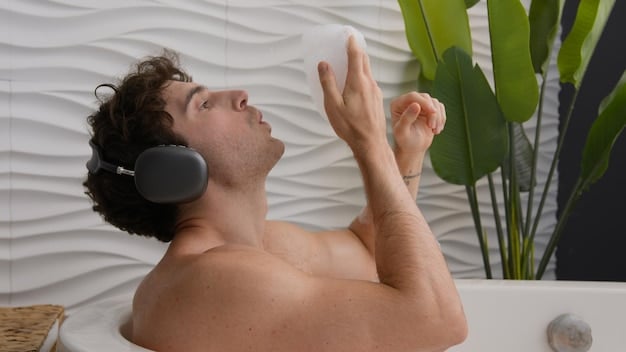
When to Replace Your Earplugs
Earplugs should be replaced regularly to ensure optimal performance. Foam earplugs should be discarded after each use. Musicians’ earplugs and custom-molded earplugs should be replaced every 3-6 months, depending on usage and condition.
Inspect your earplugs regularly for any signs of wear and tear, such as cracks, tears, or hardening of the material. If you notice any damage, replace the earplugs immediately. If your earplugs no longer fit snugly or provide adequate noise reduction, it’s time for a new pair.
By following these guidelines for proper use and maintenance, you can ensure that your concert ear protection remains in optimal condition and continues to provide adequate protection for your hearing. Regular care and attention will help you enjoy live music without compromising your health.
Ultimately, taking proactive steps to protect your hearing at concerts is a simple yet effective way to preserve your hearing health. By understanding the importance of ear protection and following these tips, you can continue to enjoy live music for years to come.
The Long-Term Benefits of Hearing Protection
Investing in and consistently using concert ear protection yields significant long-term benefits for your hearing health. Preventing noise-induced hearing loss (NIHL) and tinnitus ensures a higher quality of life and continued enjoyment of music and sound.
This section explores the long-term effects of not protecting your hearing, the advantages of proactive ear protection, and how these measures contribute to overall well-being.
Preventing Noise-Induced Hearing Loss (NIHL)
NIHL is a permanent and irreversible condition caused by prolonged exposure to loud noise. It affects millions of people worldwide and can significantly impact your ability to hear and understand speech. Using concert ear protection can significantly reduce your risk of developing NIHL.
NIHL typically develops gradually over time, making it difficult to detect in its early stages. Symptoms may include muffled hearing, difficulty understanding speech in noisy environments, and the need to turn up the volume on electronic devices. Taking proactive steps to protect your hearing can prevent these symptoms from developing.
Being mindful and taking precautions early can preserve your hearing for a lifetime. Don’t underestimate the power of prevention when it comes to NIHL.
Avoiding Tinnitus
Tinnitus is a common condition characterized by a persistent ringing, buzzing, or hissing sound in the ears. It can be caused by exposure to loud noise, certain medications, and other health conditions. While tinnitus may be temporary, it can become chronic and significantly impact your quality of life. Using concert ear protection can help prevent the onset of tinnitus.
Tinnitus can be incredibly disruptive, making it difficult to concentrate, sleep, and enjoy everyday activities. In some cases, it can lead to anxiety, depression, and other mental health issues. Protecting your ears from loud noise can significantly reduce your risk of developing this condition.
Many people who experience tinnitus find it challenging to manage, underscoring the importance of avoiding it in the first place. Prevention is always better than cure.
Improved Quality of Life
Protecting your hearing with concert ear protection has a direct impact on your overall quality of life by ensuring you can continue to enjoy music, conversations, and other sounds without difficulty. Good hearing health contributes to better communication, social interactions, and cognitive function.
Maintaining healthy hearing allows you to fully participate in social activities, enjoy live music, and communicate effectively with others. It prevents the isolation and frustration that can result from hearing loss and tinnitus, enabling you to live a more fulfilling and connected life.
- Better Communication: Easier and more enjoyable conversations.
- Greater Social Engagement: Full participation in social activities.
- Enhanced Enjoyment of Music: Relishing every note and beat.
Ultimately, the long-term benefits of using concert ear protection extend far beyond simply preventing hearing damage. They encompass your overall well-being and your ability to fully engage with the world around you. Investing in your hearing health is an investment in your future.
Investing in concert ear protection is an investment in your future well-being. Protecting your hearing ensures that you can continue to enjoy the sounds you love without compromising your health or quality of life. Make it a priority to protect your ears at every concert and live music event.
Frequently Asked Questions (FAQs)
What is the safe decibel level for concerts?
Concerts often exceed 100 dB, which can be harmful with prolonged exposure. Aim for levels below 85 dB to minimize risk.
Are foam earplugs good for concerts?
Foam earplugs are affordable and effective for noise reduction but can muffle sound quality. They’re a good option for occasional concert-goers on a budget.
What are musicians’ earplugs?
Musicians’ earplugs reduce sound evenly across frequencies, preserving sound quality while protecting your ears. They are ideal for frequent concert attendees.
How do I clean my earplugs?
Clean reusable earplugs with mild soap and water, rinse thoroughly, and let them air dry. Store them in a clean case to prevent contamination and damage.
How often should I replace my earplugs?
Replace foam earplugs after each use. Replace musicians’ earplugs and custom-molded earplugs every 3-6 months, or sooner if you notice any damage.
Conclusion
Protecting your hearing at concerts is essential for enjoying live music without risking long-term damage. By understanding the types of concert ear protection available, choosing the right option for your needs, and using and maintaining it properly, you can ensure years of enjoyable and safe concert experiences.
Read more content
